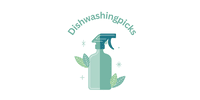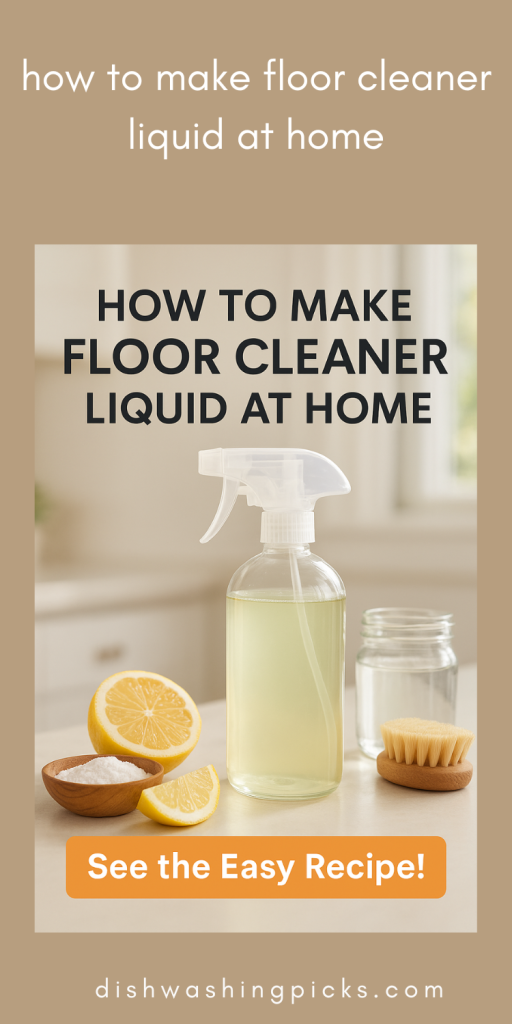Ever looked at those fancy bottles of floor cleaner in the store and thought, “Do I really need all these chemicals on my floor?” Yeah, me too. Honestly, making your own floor cleaner at home isn’t just a way to save a few bucks—it’s a total game-changer for your health, your home, and even the planet.
Imagine this: you’re mopping your kitchen, and instead of that harsh chemical smell, your place smells fresh and natural. Feels better already, right? Plus, it’s super customizable. Want a lemony zing? Or maybe a calming lavender scent? You’re the boss here.
And let’s be real—there’s something satisfying about whipping up your own cleaning potion. It’s like being a little domestic scientist, minus the lab coat (though hey, if you want to wear one, go for it).
But before we jump straight into mixing stuff, let’s think about what really makes a good floor cleaner.
The Secret Ingredients for a Killer Homemade Floor Cleaner
Alright, picture this: you’ve got a mop in one hand, and in the other hand… well, let’s say a few simple, natural ingredients that you probably already have in your kitchen. That’s right—no weird chemicals needed. Here’s the dream team:
1. Vinegar – The All-Star Cleaner
You might be thinking, “Vinegar? Isn’t that just for salad?” Oh no, my friend. Vinegar is acidic, which means it can cut through grease, grime, and even stubborn soap scum. Plus, it’s naturally antibacterial. Pro tip: it works especially well on tiles and laminate floors.
2. Baking Soda – The Gentle Scrubber
If your floor had a little twin that could scrub without scratching, this would be it. Baking soda is great for lifting dirt and neutralizing odors. Sprinkle a tiny bit in your mix, and suddenly your floor smells fresh instead of… well… funky.
3. Essential Oils – The Fancy Touch
Lavender, lemon, tea tree… pick your vibe. Not only do essential oils make your cleaner smell amazing, but some (like tea tree) also have natural antibacterial properties. It’s like giving your floor a spa day while you mop.
4. Warm Water – The Carrier
Everything else needs a base, right? Warm water helps dissolve your ingredients and makes it easier to mop without leaving streaks.
Optional Extras:
- A tiny squirt of mild liquid soap for extra grease-fighting power.
- A little rubbing alcohol if you want your floors to dry faster and shine brighter.
Think of this as a “choose your own adventure” cleaner. You can tweak the scent, the scrubbing power, or the streak-free shine depending on your floor type and personal preference.
Next up, I’ll show you how to mix these ingredients step by step into a ready-to-use floor cleaner that’s safe, effective, and smells incredible.
Step-by-Step: Making Your Homemade Floor Cleaner
Okay, imagine this—you’re in your kitchen, music playing, and in just a few minutes, you’ve got a bottle of floor-cleaning goodness ready to go. Here’s how to do it:
What You’ll Need:
- 1 cup white vinegar
- 1 tablespoon baking soda
- 10–15 drops of your favorite essential oil (lemon, lavender, or tea tree)
- 4 cups warm water
- Optional: 1 teaspoon mild liquid soap
Steps:
- Mix the Water and Vinegar First
Pour the warm water into a large bowl or directly into a spray bottle. Add the vinegar. This is your base. - Add Baking Soda Slowly
Sprinkle in the baking soda a little at a time. Why slowly? Because it fizzes a bit when it meets vinegar—it’s perfectly normal! Stir gently until dissolved. - Add Essential Oils and Soap
Drop in your chosen essential oil(s) for that heavenly scent. If you’re using soap, add it here. Give it a gentle stir—don’t overdo it, or you’ll get too many bubbles. - Pour Into a Bottle
Use a funnel if needed. You can store this in a spray bottle for quick spot cleaning or a larger bottle for mopping sessions.
Pro Tip: Always shake before using. The ingredients can separate over time, and a little shake brings it all back together.
And there you have it—your own natural, effective, and budget-friendly floor cleaner! Easy, right? Plus, you can feel good knowing it’s safe for kids, pets, and the environment.
Next, I can share tips for using it on different types of floors and making it streak-free, so your floors will look professionally cleaned every time.
How to Use Your Homemade Floor Cleaner Like a Pro
So you’ve got your DIY cleaner ready. Now what? Here’s how to get the best results, depending on your floor type.
1. Hardwood Floors – Handle With Care
Wood can be a little picky. Too much water = warping. So:
- Use a damp mop, not a soaking wet one.
- Stick to a small amount of vinegar—about ¼ cup per gallon of water.
- Mop in the direction of the grain for that extra sparkle.
2. Tile and Vinyl – Bring on the Shine
Tiles are forgiving, so go a bit heavier on the vinegar. Bonus: your grout will thank you for the extra cleaning power.
3. Laminate – Gentle but Effective
Laminate floors love a light touch. Too much water can seep in the seams. Use a spray bottle to mist the floor lightly, then wipe with a microfiber mop.
Extra Tricks for a Streak-Free Finish:
- Rinse the mop often in clean water.
- Dry the floor with a microfiber cloth or mop after cleaning.
- If you love that extra shine, try a tiny drop of olive oil mixed in—just a drop!
Pro Tip: Keep a small spray bottle handy for spot cleaning. Sticky juice spills or muddy paw prints? Spray, wipe, done.
And the best part? You’ll notice your house smells amazing without that chemical “cleaning” smell. Imagine coming home after work and your kitchen smells like fresh lemons instead of bleach. Feels nicer, doesn’t it?
Next, I can share some clever hacks to customize your cleaner further, like making it extra fragrant, antibacterial, or even pet-safe.
Customization Hacks: Make Your Floor Cleaner Truly Yours
Why settle for “just clean” when you can have “clean, fresh, and totally personalized”? Here’s how:
1. Amp Up the Scent
Want your home to smell amazing? Add more essential oils—but don’t go overboard (a little goes a long way).
- Lemon or Orange: Bright and energizing—perfect for kitchens.
- Lavender or Chamomile: Calming vibes—ideal for bedrooms or living rooms.
- Tea Tree Oil: Fresh, medicinal smell—and bonus, it’s antibacterial.
2. Make It Extra Antibacterial
Got little ones crawling on the floor or pets that track everything inside? Mix in a teaspoon of rubbing alcohol or more tea tree oil. This adds a natural disinfecting boost without harsh chemicals.
3. Pet-Safe Version
If your fur babies like to lick the floor (yikes), skip the vinegar-heavy version and use diluted mild dish soap with warm water and a few drops of lavender. Still gets the dirt, but gentle on paws and noses.
4. Tough Stains Be Gone
For those stubborn sticky spots or crayon marks, sprinkle a bit of baking soda directly on the area and scrub gently with a damp cloth. Then mop as usual. Easy peasy.
5. Storage & Longevity Tips
Keep your cleaner in a cool, dark place, and shake before each use. It usually lasts a few weeks—enough time to get addicted to that fresh, DIY-clean smell.
See? Making your own floor cleaner isn’t just about saving money—it’s about control, customization, and a little bit of home chemistry fun.
Next, I can wrap everything up with a friendly conclusion that reminds readers why this is the smarter, happier choice, and leave them inspired to try it today.
Conclusion: Your Floors, Your Way
So there you have it—homemade floor cleaner that’s safe, effective, customizable, and actually fun to make. Who knew cleaning could feel a little like a science experiment mixed with a spa day?
Think about it: no harsh chemical smells, no mystery ingredients, and best of all—you know exactly what’s touching your floors. Plus, it’s cheap, eco-friendly, and seriously satisfying to see your floors gleaming thanks to your own handiwork.
Next time you’re staring at those dirty tiles or smudged hardwood, imagine whipping up your own magical floor potion instead of grabbing a bottle from the store. Trust me, your floors—and your nose—will thank you.
So here’s your call to action: grab your vinegar, baking soda, and favorite essential oils, and give it a try today. Once you start, you’ll never go back to the store-bought stuff.

